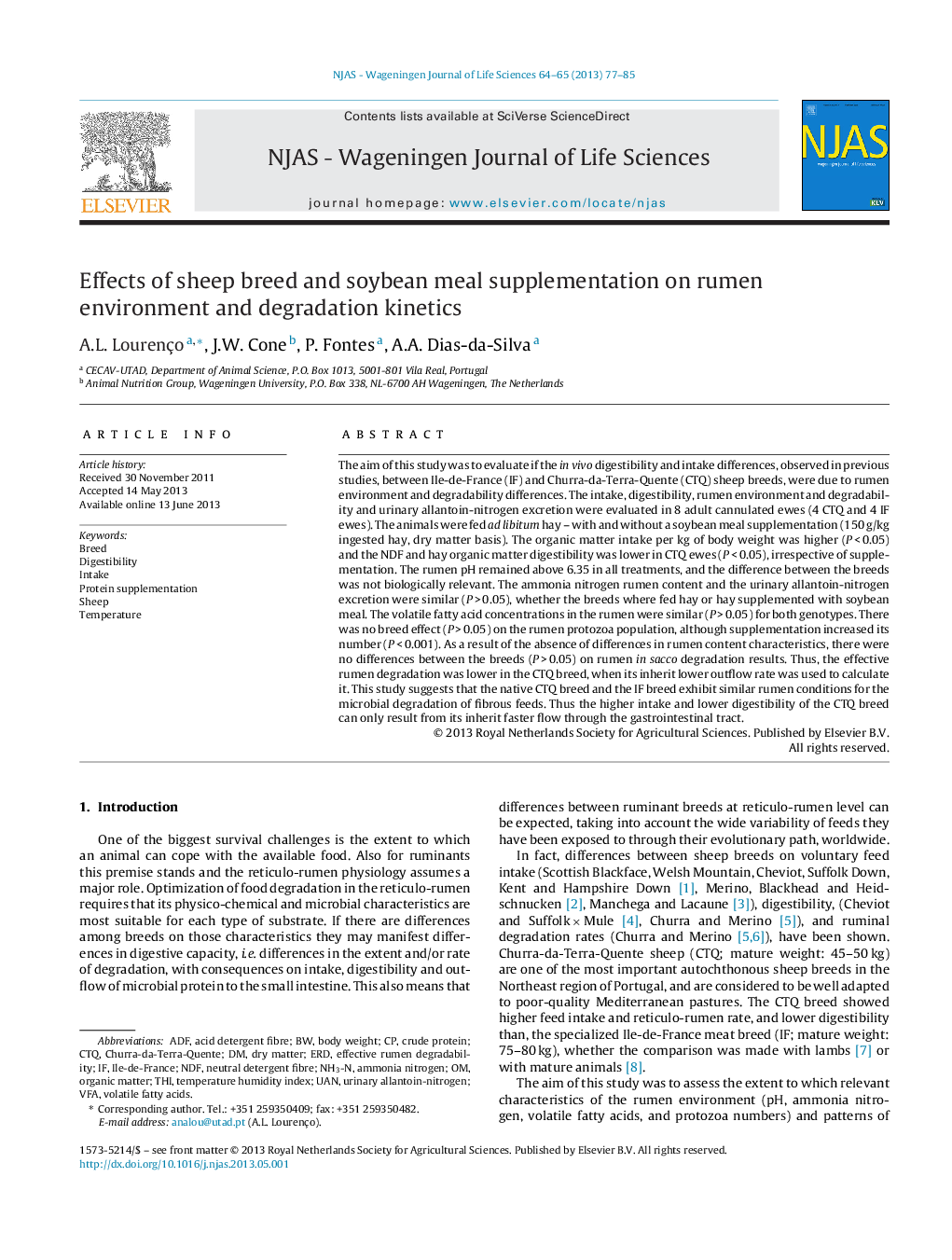| Article ID | Journal | Published Year | Pages | File Type |
|---|---|---|---|---|
| 4501320 | NJAS - Wageningen Journal of Life Sciences | 2013 | 9 Pages |
The aim of this study was to evaluate if the in vivo digestibility and intake differences, observed in previous studies, between Ile-de-France (IF) and Churra-da-Terra-Quente (CTQ) sheep breeds, were due to rumen environment and degradability differences. The intake, digestibility, rumen environment and degradability and urinary allantoin-nitrogen excretion were evaluated in 8 adult cannulated ewes (4 CTQ and 4 IF ewes). The animals were fed ad libitum hay – with and without a soybean meal supplementation (150 g/kg ingested hay, dry matter basis). The organic matter intake per kg of body weight was higher (P < 0.05) and the NDF and hay organic matter digestibility was lower in CTQ ewes (P < 0.05), irrespective of supplementation. The rumen pH remained above 6.35 in all treatments, and the difference between the breeds was not biologically relevant. The ammonia nitrogen rumen content and the urinary allantoin-nitrogen excretion were similar (P > 0.05), whether the breeds where fed hay or hay supplemented with soybean meal. The volatile fatty acid concentrations in the rumen were similar (P > 0.05) for both genotypes. There was no breed effect (P > 0.05) on the rumen protozoa population, although supplementation increased its number (P < 0.001). As a result of the absence of differences in rumen content characteristics, there were no differences between the breeds (P > 0.05) on rumen in sacco degradation results. Thus, the effective rumen degradation was lower in the CTQ breed, when its inherit lower outflow rate was used to calculate it. This study suggests that the native CTQ breed and the IF breed exhibit similar rumen conditions for the microbial degradation of fibrous feeds. Thus the higher intake and lower digestibility of the CTQ breed can only result from its inherit faster flow through the gastrointestinal tract.
